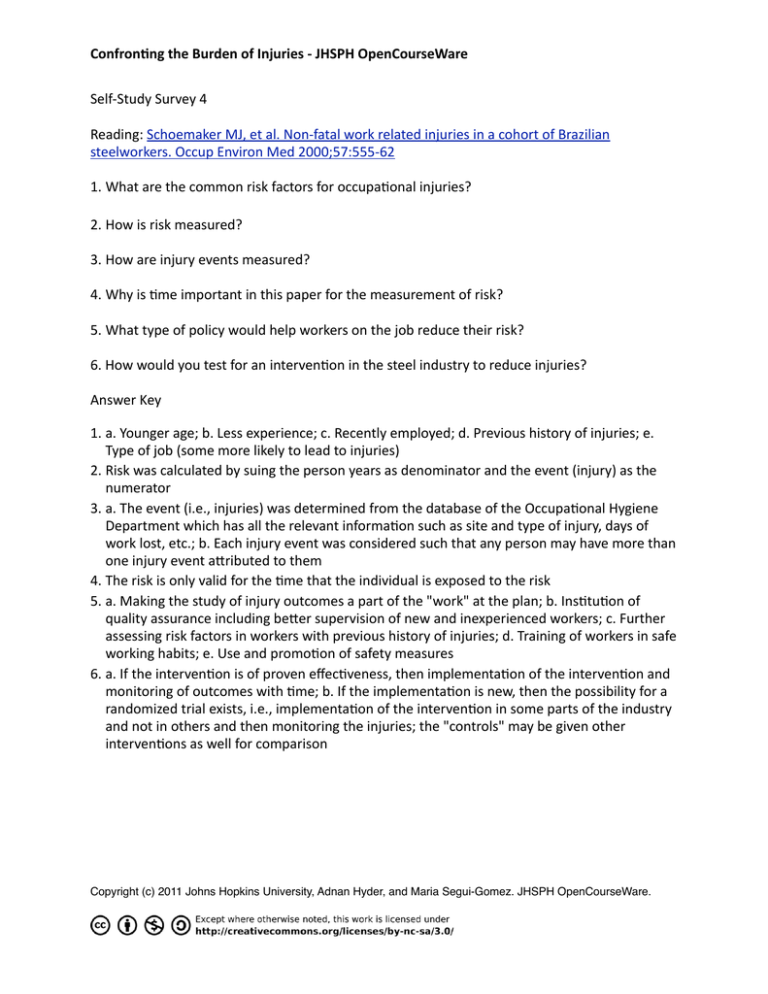Document 11248354
advertisement

Confron&ng the Burden of Injuries -­‐ JHSPH OpenCourseWare Self-­‐Study Survey 4 Reading: Schoemaker MJ, et al. Non-­‐fatal work related injuries in a cohort of Brazilian steelworkers. Occup Environ Med 2000;57:555-­‐62 1. What are the common risk factors for occupaNonal injuries? 2. How is risk measured? 3. How are injury events measured? 4. Why is Nme important in this paper for the measurement of risk? 5. What type of policy would help workers on the job reduce their risk? 6. How would you test for an intervenNon in the steel industry to reduce injuries? Answer Key 1. a. Younger age; b. Less experience; c. Recently employed; d. Previous history of injuries; e. Type of job (some more likely to lead to injuries) 2. Risk was calculated by suing the person years as denominator and the event (injury) as the numerator 3. a. The event (i.e., injuries) was determined from the database of the OccupaNonal Hygiene Department which has all the relevant informaNon such as site and type of injury, days of work lost, etc.; b. Each injury event was considered such that any person may have more than one injury event a]ributed to them 4. The risk is only valid for the Nme that the individual is exposed to the risk 5. a. Making the study of injury outcomes a part of the "work" at the plan; b. InsNtuNon of quality assurance including be]er supervision of new and inexperienced workers; c. Further assessing risk factors in workers with previous history of injuries; d. Training of workers in safe working habits; e. Use and promoNon of safety measures 6. a. If the intervenNon is of proven effecNveness, then implementaNon of the intervenNon and monitoring of outcomes with Nme; b. If the implementaNon is new, then the possibility for a randomized trial exists, i.e., implementaNon of the intervenNon in some parts of the industry and not in others and then monitoring the injuries; the "controls" may be given other intervenNons as well for comparison Copyright (c) 2011 Johns Hopkins University, Adnan Hyder, and Maria Segui-Gomez. JHSPH OpenCourseWare.


